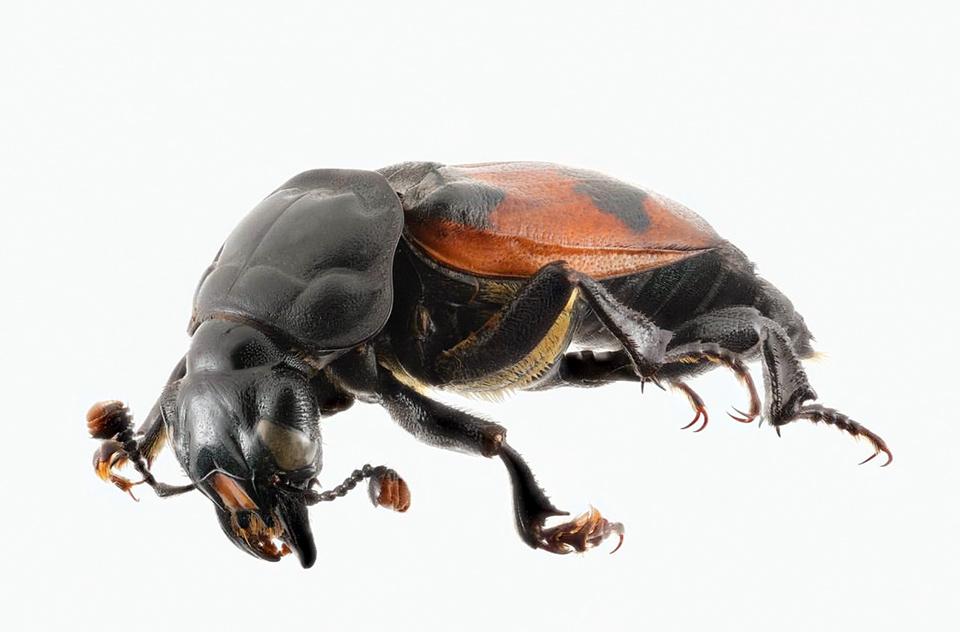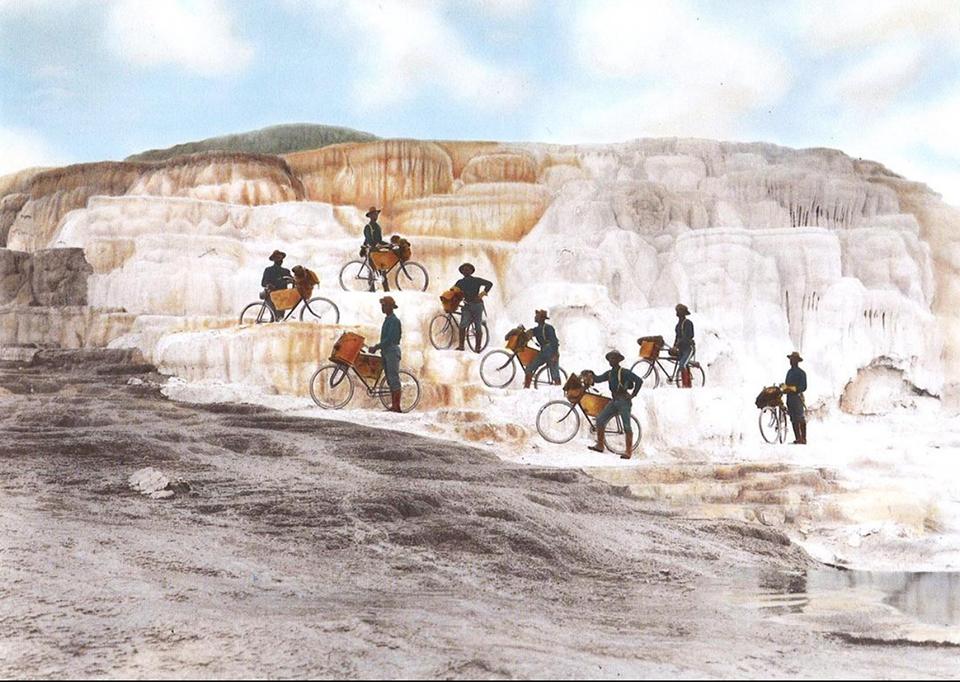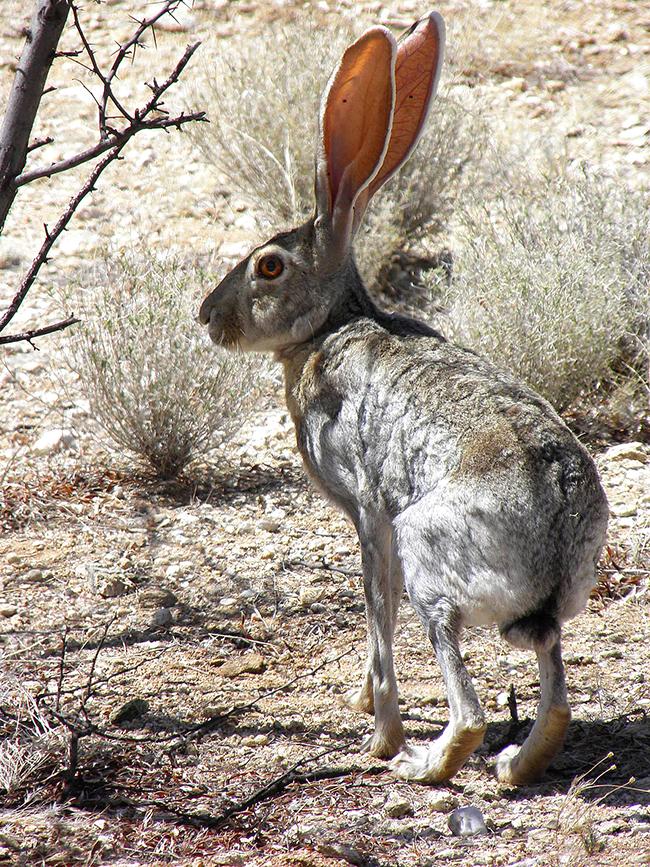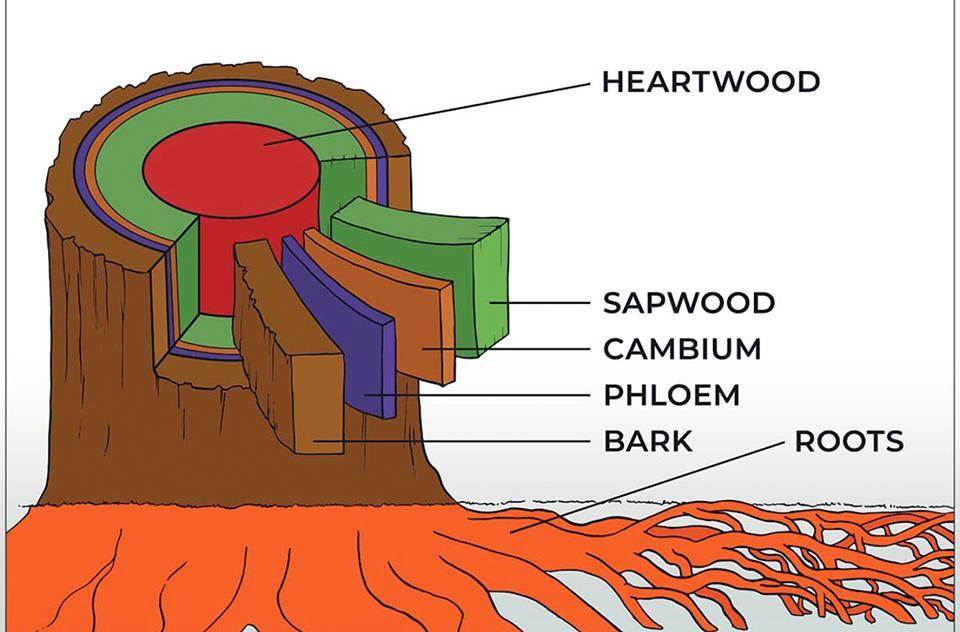
Spruce Tree House, Mesa Verde National Park / Rebecca Latson
According to NPS.gov, “the National Park Service manages 424 individual units covering more than 85 million acres in all 50 states, the District of Columbia, and US territories.” With so much to learn about each unit, there’s plenty of material for more quiz and trivia pieces like this one. Test your park knowledge and see how much you really do know about these units before reviewing the answers at the bottom of this piece.
1. True or False: Spruce Tree House in Mesa Verde National Park is the second-largest cliff dwelling within the park.
a) True
b) False

Harmony Borax Works, Death Valley National Park / NPS - L. Johnston
2. True or False: Borax brought more money to Death Valley’s miners than gold and silver combined.
a) True
b) False

A very small ecosystem denizen (greatly magnified) of Yellowstone National Park / NPS File
3. “We often think of ecosystems on the landscape scale, but the carcasses of elk, bison, and other large mammals can act like ecosystems of their own. At least ___ species of beetle are associated with ungulate carcasses in Yellowstone.”
a) 24
b) 35
c) 43
d) 57

How does this liverwort reproduce? Bandelier National Monument / NPS File
4. “Liverworts are a type of non-vascular land plant found in the damp riparian areas of Bandelier National Monument.” True or false: Liverworts reproduce both sexually and asexually.
a) True
b) False

A historical postcard picture of Buffalo Soldiers and their bicycles on Minerva Terrace at Mammoth Hot Springs (not allowed today, btw), Yellowstone National Park / F.J. Haynes
5. “In 1886, a company of Buffalo Soldiers in the army’s 25th Infantry stopped through Yellowstone National Park on a 800-mile bicycle ride from Fort Missoula, Montana … These members of the U.S. Army Bicycle Corps were testing to see if the new phenomenon of the bicycle could replace the need for horses as a viable source of transportation.” True or False: U.S. infantry regiments of Buffalo Soldiers were among the first park rangers in parts of the West, including Yellowstone.
a) True
b) False

A pretty little pyrrhuloxia, White Sands National Park / NPS - Sandra Noll
6. While visiting Saguaro or Big Bend or White Sands national parks, you might see a bird that looks very much like a cardinal, except it’s gray instead of bright red. This is the pyrrhuloxia (peer-uh-LOX-ee-a) and it is sometimes called the ___.
a) Gray cardinal
b) False cardinal
c) Desert cardinal
d) Summer cardinal

Glacier monitoring at North Cascades National Park / NPS File
7. “North Cascades National Park Complex has over 300 glaciers. About a third of all glaciers in the Lower 48 lie within the North Cascades region.” True or False: Researchers estimate North Cascades has lost 30 percent of its glacial area over the past 150 years.
a) True
b) False

Antelope jackrabbit, Saguaro National Park / NPS File
8. While hiking the trails of Saguaro National Park, you might see a very long-eared antelope jackrabbit hop across your path. Here’s a fun fact: the antelope jackrabbit eats its own poop (eww). This is known as being ___.
a) coprophagic
b) fecephagic
c) excraphagic
d) scatphagic

Meep meep! Greater Roadrunner with lunch, Bandelier National Monument / NPS File
9. A hike through Big Bend National Park or Bandelier National Monument or other park units within the Southwestern U.S. might being you in contact with the Greater Roadrunner (Geococcyx californianus). True or false: the Greater Roadrunner is the state bird of Texas.
a) True
b) False

A scuba diver spearing a lionfish, an invasive species at Biscayne National Park / NPS File
10. The most abundant invasive species in Biscayne National Park is the Indo-Pacific lionfish. Lionfish are voracious animals and a single lionfish can eat so much that its stomach can expand up to ___ times its original size.
a) 10
b) 20
c) 30
d) 40
Trivia

Hemmed-in Hollow waterfall, Buffalo National River / NPS File
“The Hemmed–in Hollow Trail begins in the heart of the Ponca Wilderness at the Compton Trailhead and winds down the mountain side descending nearly 1,400 ft. to the sandstone bluffs along the Buffalo River. The trail opens up along the way, giving visitors outstanding scenic views of the Buffalo River and the Ozark Mountains that surround it. The gem of this hike is Hemmed-in Hollow Falls. The picturesque Hemmed-in Hollow falls cascades nearly 210 feet (64 meters) over the rugged Ozark bluffs, making it the highest waterfall between the Rockies and the Appalachians. This waterfall only flows after a considerable amount of rain, so always be mindful of recent precipitation before you attempt this difficult hike. The Hemmed-in Hollow Trail is an extremely steep and strenuous trail that will humble even the most experienced hiker.”

Just what lies beneath the bark of a coastal redwood or giant sequoia tree? Save the Redwoods image
“Under the bark of coast redwoods [like those seen in Redwood National and State Parks] and giant sequoias [like those seen in Sequoia and Kings Canyon National Parks] are many layers, each with an important job in the growth and protection of the tree. The bark is the outer layer of the tree and protects the tree from damage and disease. Coast redwood and giant sequoia bark is rich in a chemical called tannic acid, which insects and fungus avoid. The thick bark also protects the inner wood from fires. Just below the bark is the phloem layer, which carries the food, mostly sugar, from the leaves to the rest of the tree. This is where you find sap (water with sugars and nutrients). The cambium, a very thin layer just below the phloem layer is where new wood is made. When the cambium gets damaged, the tree’s growth stops or slows down. Sapwood, also called xylem, is between the cambium and heartwood and carries water from the roots to the rest of the tree. Old sapwood turns into heartwood over time. The darker wood at the center of the tree is the heartwood. It keeps the tree tall and strong, giving support. The heartwood also stores water. The roots take in water and nutrients from the soil. They grow long distances from the tree trunk but rarely grow deep. They have a special partnership with a fungus which grows on the roots and helps the tree absorb nutrients.”

A long line of prospectors waiting their turn at the mountain, Klondike Gold Rush National Historical Park / NPS historical archive
“The Chilkoot Trail, recently designated as a national historic trail, is a 16.5-mile (26.6-kilometer) route within Klondike Goldrush National Historical Park that was traditionally used as a trading route by the Tlingit Indian Tribe and Tagish First Nation and as a gold rush route during the Klondike Gold Rush. The trail was one of three routes through the Coast Mountains that was accessible year-round. Tlingit traders would travel from the coast to the interior carrying goods for trade with the Tagish First Nation in Canada. When the number of miners and prospectors trying to get to the Klondike increased, the Tlingit people were pressured to allow foreigners to use the trail. After the gold rush, the Chilkoot Trail was left in ruins. As a result of the trail’s deterioration, it was used only sporadically after 1910. The Chilkoot National Historic Trail was registered on the National Register of Historic Places in 1978, two years after the establishment of Klondike Gold Rush National Historical Park. Today, you can hike the trail and reflect on its history and the importance of this route to the Tlingit and Tagish peoples.”
Answers
1b False
Spruce Tree House is the third-largest cliff dwelling within Mesa Verde National Park. Cliff Palace and Long House are larger. To learn more about Spruce Tree House, click here.
2a True
“Borax, refined from borate minerals raked off the valley floor, brought more money to Death Valley’s miners than gold and silver combined. Not only is borax still used as a laundry booster, it is also a flux [removing metal oxides and improving slag control when welding iron and steel], insecticide, wood preservative, fire retardant, pH buffer, and additive in glass, porcelain enamel, metal alloys and more.” To learn more about Harmony Borax Works, click here.
3d
“At least 57 species of beetle are associated with ungulate carcasses in Yellowstone, only one of which actually consumes meat. The rest prey on other small scavengers and carcass byproducts.” To learn more about Yellowstone’s natural cycles and processes, click here.
4a True
“Liverworts do not have true leaves or stems but can spread rapidly because they reproduce both sexually and asexually. In sexual reproduction, stalked, umbrella-like male and female reproductive structures are borne on separate green shoots. In asexual reproduction, gemmae (a single cell, a mass of cells, or a modified bud of tissue that detaches from the parent and develops into a new individual) are produced inside circular gemmae cups. Gemmae are spread by rainfall splashing into the gemmae cups.”
5a True
“U.S. infantry regiments of Buffalo Soldiers were among the first park rangers in parts of the West, including Yellowstone. They patrolled vast expanses of challenging terrain, provided security, arrested and deterred poachers, built roads, and more. The Buffalo Soldiers are lauded for their invaluable service and accomplishments despite widespread discrimination.” To learn more about the history and impact of the Buffalo Soldiers in national parks, click here.
6c
“The pyrrhuloxia is sometimes called the desert cardinal. Although similar to the northern cardinal in its song and behavior, pyrrhuloxia can tolerate drier and more open habitats. In the spring and summer, they get most of their water from their insect food. Female cardinals are often confused with pyrrhuloxias, but the giveaway feature is the color and shape of their bill. Pyrrhuloxia have short yellow bills, while cardinals have longer red bills.
7b False
Researchers estimate North Cascades has lost 40 percent of its glacial area over the past 150 years. In 1993, the park began a glacial monitoring program to better understand the impacts of human-caused climate change on this rapidly disappearing and extremely important natural resource … To maintain glacial mass in North Cascades, scientists calculate we need 120-130 percent above normal snowfall each year to counteract increasingly long, hot, and dry summers.
8a
The antelope jackrabbit is coprophagic. They eat their own feces. Why? “There are a couple of advantages to this. Number one is to take moisture and nutrients out of the food the second time around. And number two (hehe) is less time foraging equals less time exposed to predators … Most rabbit and hare species practice coprophagia. When the digested vegetation isn’t fully processed, those poo pellets or cecotropes as they are also called, aren’t quite waste material yet. They can still be filled with nutritionally rich contents and eaten again.”
9b False
The Greater Roadrunner is the state bird of New Mexico. To learn more about this bird so bedeviled by Wile E. Coyote, click here. Meep meep!
10c
A lionfish eats so much that its stomach can expand up to 30 times its original size. In addition to eating up the native species within Biscayne National Park, lionfish have venomous spines which post a safety problem with people swimming within the waters of the park. Punctures from a venomous spine can lead to pain and swelling, sweating, muscle weakness, and a tingling sensation, all of which can last for several days. Yikes!


